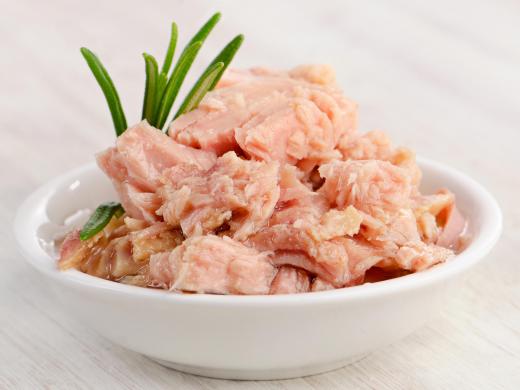Tuna jigging is a technique for catching tuna with a specific type of lure known as a jig. Jigs are made of long and slender pieces of metal resembling a prey fish. A shiny jig or one that is diamond shaped will sparkle in the water and attract the attention of fish. There also are special tuna jigging rods and reels available that are a lighter weight than most boat rods and reels and allow for greater accuracy in casting.
The term "jigging" also refers to the retrieving style used by fishermen. The jig will be allowed to sink deeply, nearly to the bottom of the ocean floor, to attract the larger tuna that stay well below the surface. Once the proper depth is reached, the fisherman begins to reel in the jig in a series of jerky motions.
This uneven darting movement fools tuna, which think the jig is a wounded or panicking prey fish. They will chase after the jig as it swims irregularly to the surface. One’s chances of catching tuna with a jig lure are much better than with bait.

While many tuna are successfully caught with baited hooks, professional and experienced fishermen enjoy the extra challenge and control of tuna jigging. With a jig rod and reel, one can cast for a greater distance and be more selective about where the jig will land. Jig fishing also is cleaner, because there is no need to keep baiting a hook.
The best way to learn to jig for tuna is to watch an experienced tuna jigging fisherman. The tip of his or her rod will bow and dance as the jig is reeled in. If a tuna grabs the lure, the pull is unmistakable. One should not yield to the instinct to rear back immediately. It is recommended that one wait about five seconds before setting the hook.

When fighting a tuna, the rod should be pointed in the direction the fish is headed. The drag on the reel should be set to keep the line taut, but not so tight that the line may snap if the fish lunges or jumps. One should reel in any slack line to keep it from getting tangled on rocks, pilings or other obstacles.
If there are others fishing on the boat, one should take steps to avoid having one’s lines tangle. Catching a big tuna involves following it as it swims. The chase frequently will have the fisherman or fisherwoman climbing all around the boat. Landing a big, jigged tuna may take a few minutes or several hours but fans say the process makes every fish exciting to catch.
